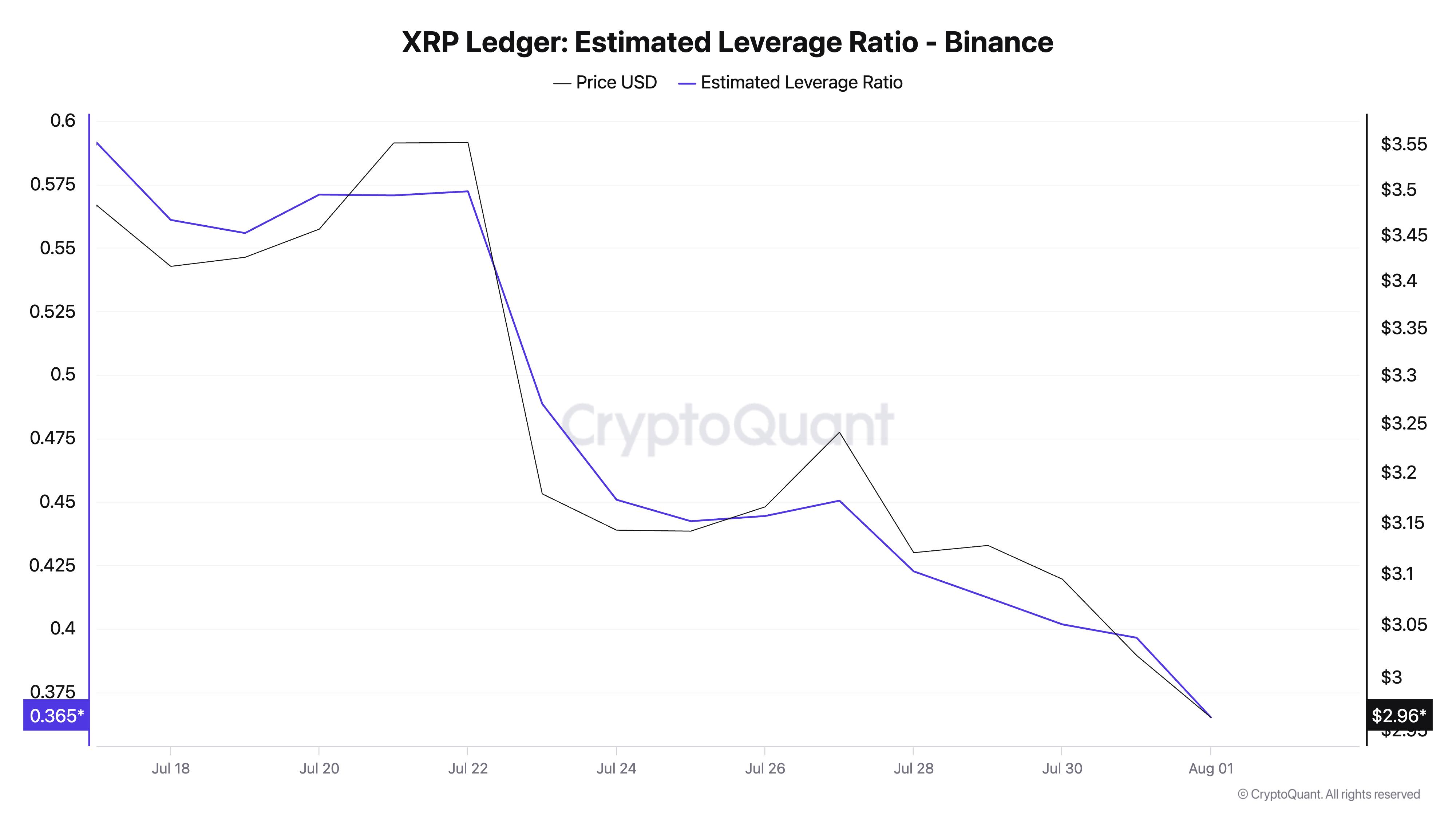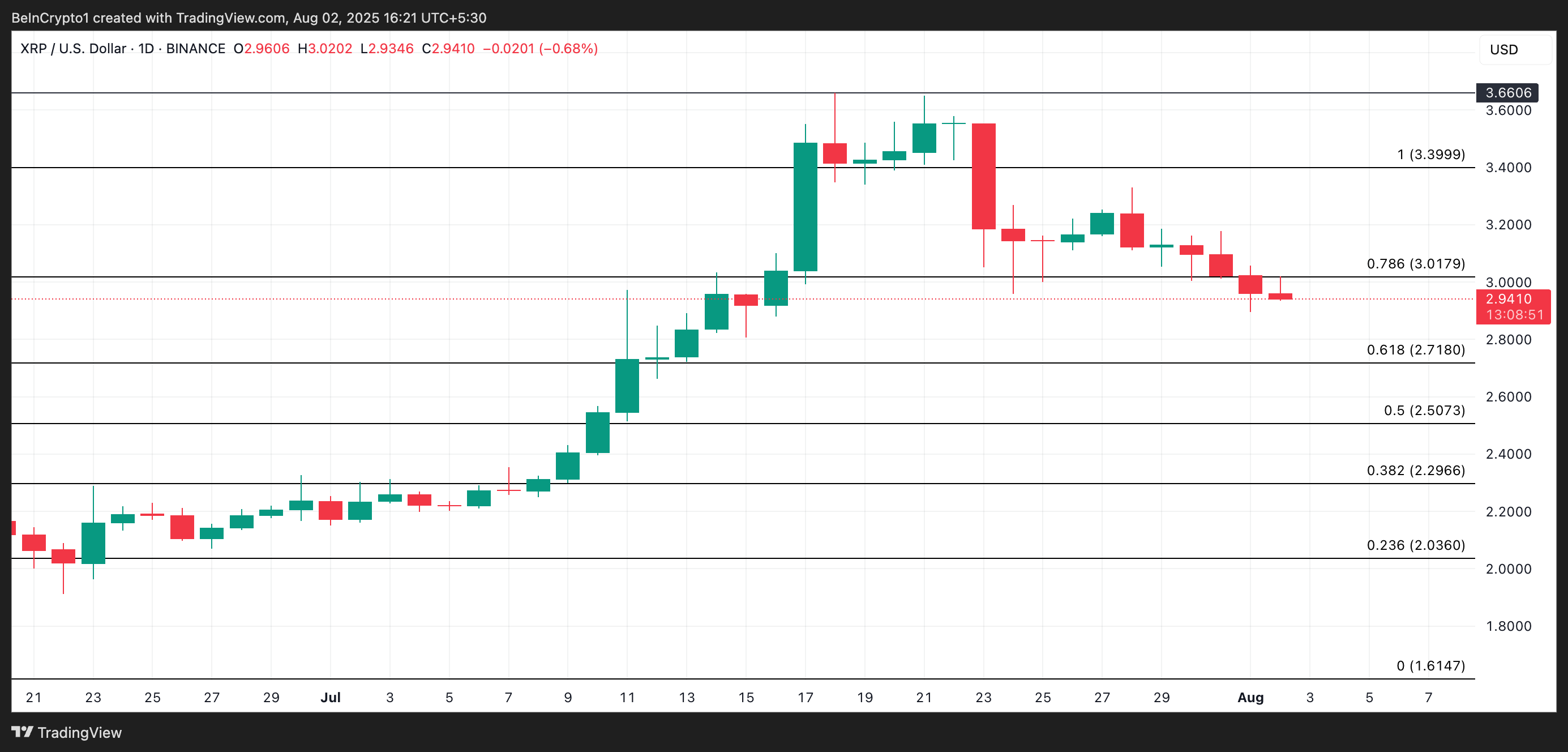XRP’s declining Estimated Leverage Ratio and negative netflows exceeding $222 million highlight reduced investor confidence and increased selling pressure, signaling potential short-term price weakness.
-
XRP’s Estimated Leverage Ratio (ELR) has dropped to 0.36, reflecting cautious trader behavior and lower risk appetite.
-
Negative spot netflows of over $222 million since late July show sustained sell-side dominance and weak buying interest.
-
If XRP fails to hold support at $2.71, it may decline further to $2.50, while a breakout above $3 could spark a rally to $3.39.
XRP’s falling leverage and heavy net outflows signal weakening investor confidence. Stay updated on XRP price trends and market shifts with COINOTAG.
Why Is XRP’s Estimated Leverage Ratio Falling and What Does It Mean?
XRP’s Estimated Leverage Ratio (ELR) is a key indicator of trader risk appetite, currently at 0.36, its lowest weekly close in a month. This metric measures the average leverage used by traders on Binance by dividing open interest by the exchange’s reserve for XRP. A falling ELR suggests traders are reducing leveraged positions, reflecting caution amid uncertain market conditions.
How Do Negative Netflows Impact XRP’s Market Sentiment?
Negative netflows exceeding $222 million since July 29, as reported by Coinglass, indicate that more XRP is being sold than bought on spot markets. This persistent sell-side pressure weakens demand, contributing to downward price momentum. The imbalance between sellers and buyers highlights a cautious market environment with limited bullish support.

XRP Estimated Leverage Ratio. Source: CryptoQuant

XRP Spot Netflow. Source: Coinglass
What Are the Key Support and Resistance Levels for XRP?
XRP faces critical support at $2.71, which if breached, could lead to a sharper decline toward $2.50. This level is crucial for maintaining short-term stability. Conversely, a breakout above the $3 mark could signal renewed buying interest, potentially driving XRP toward $3.39. Traders should watch these levels closely for signs of trend reversals or continuation.

XRP Price Analysis. Source: TradingView
How Does Market Sentiment Influence XRP’s Price Movement?
Market sentiment is currently bearish due to declining leverage and heavy net outflows. This environment discourages high-risk trades and encourages profit-taking. Without significant buying pressure, XRP’s price may continue to face downward pressure. However, shifts in sentiment driven by broader crypto market trends or positive catalysts could reverse this trajectory.
Frequently Asked Questions
What is the Estimated Leverage Ratio and why is it important for XRP?
The Estimated Leverage Ratio measures the average leverage used by traders on exchanges. For XRP, a falling ELR signals decreasing risk-taking and cautious investor behavior, which can impact price stability.
Why are XRP netflows negative and what does that mean for investors?
Negative netflows occur when more XRP is sold than bought, indicating selling dominance. This trend suggests investors are taking profits or exiting positions, which may lead to price declines.
Key Takeaways
- Falling ELR: Indicates reduced trader risk appetite and cautious sentiment.
- Negative Netflows: Over $222 million outflows highlight strong selling pressure.
- Critical Price Levels: Support at $2.71 and resistance near $3 determine short-term price direction.
Conclusion
XRP’s declining Estimated Leverage Ratio and significant negative netflows reveal weakening investor confidence and increased selling pressure. These factors suggest potential short-term price weakness, with key support at $2.71 critical to watch. However, a breakout above $3 could revive bullish momentum, making it essential for traders to monitor market dynamics closely. COINOTAG remains committed to providing timely insights into XRP and broader crypto market trends.
